
For many businesses, increasing reach seems almost impossible. This means that most companies can expect content to only appear in the news feeds of 1 in 20 followers.
But it's important to remember that this is an average, not an upper limit. You can instruct the Facebook algorithm to reach more people by posting content that resonates with your audience and leads to more interaction. There are four ways to extend the reach of organic content.
From social media channels to enjoyment platforms, Facebook has a variety of competition. That`s why the Facebook set of rules is skilled to preserve customers scrolling and interacting for so long as possible. As a result, Facebook is much less probably to floor content material with low engagement and much more likely to prioritize posts with lots of shares, reactions, and comments.
What`s the high-quality manner to get your target market to have interaction together along with your content material?
For example, the Ben & Jerry`s Facebook submit under asks fans to percentage recollections of one of the ice cream logo`s maximum iconic flavors. The submit lets in longtime clients to exhibit their information and invitations all fans to talk about their favorites.
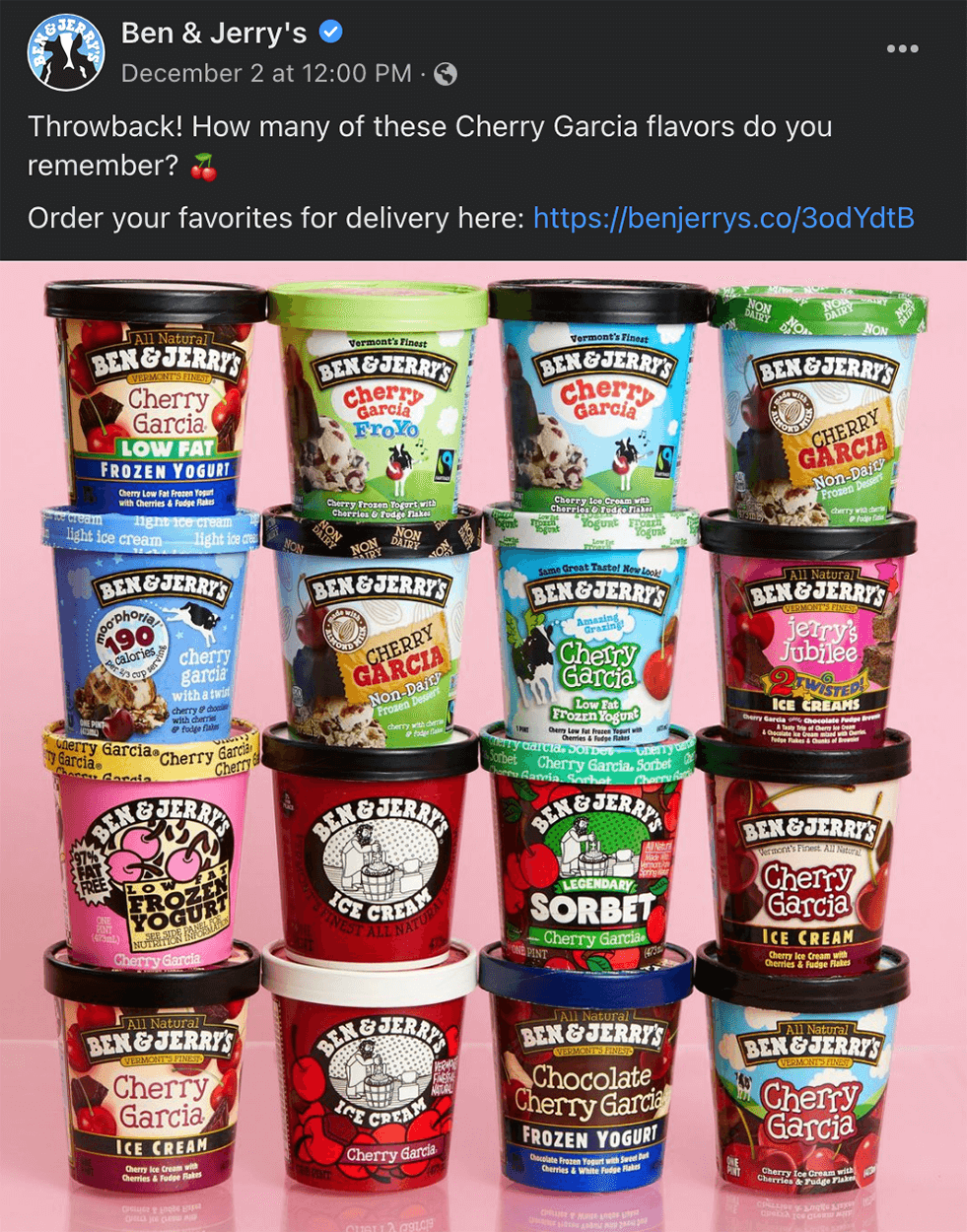
Need to focus on getting more reactions, sharing, or comments? There is no consensus on which type of engagement is most important. However, you need to take the time to respond to at least some of the comments that your content receives. The response shows that your business cares and also creates a thread that can give the Facebook algorithm a high level of engagement and relevance.
A compelling caption like Ben & Jerry’s example above can easily convince your audience to engage. But you don’t have to rely exclusively on social media copy. The type of creativity you use can also affect your reach and engagement levels.
For years, native video has been credited with the highest engagement rates on Facebook. Additionally, consumers are showing a preference for video content across all social media platforms. To keep up, Facebook continues to introduce new video tools, which means you have even more options for creating high-performing content on Facebook.
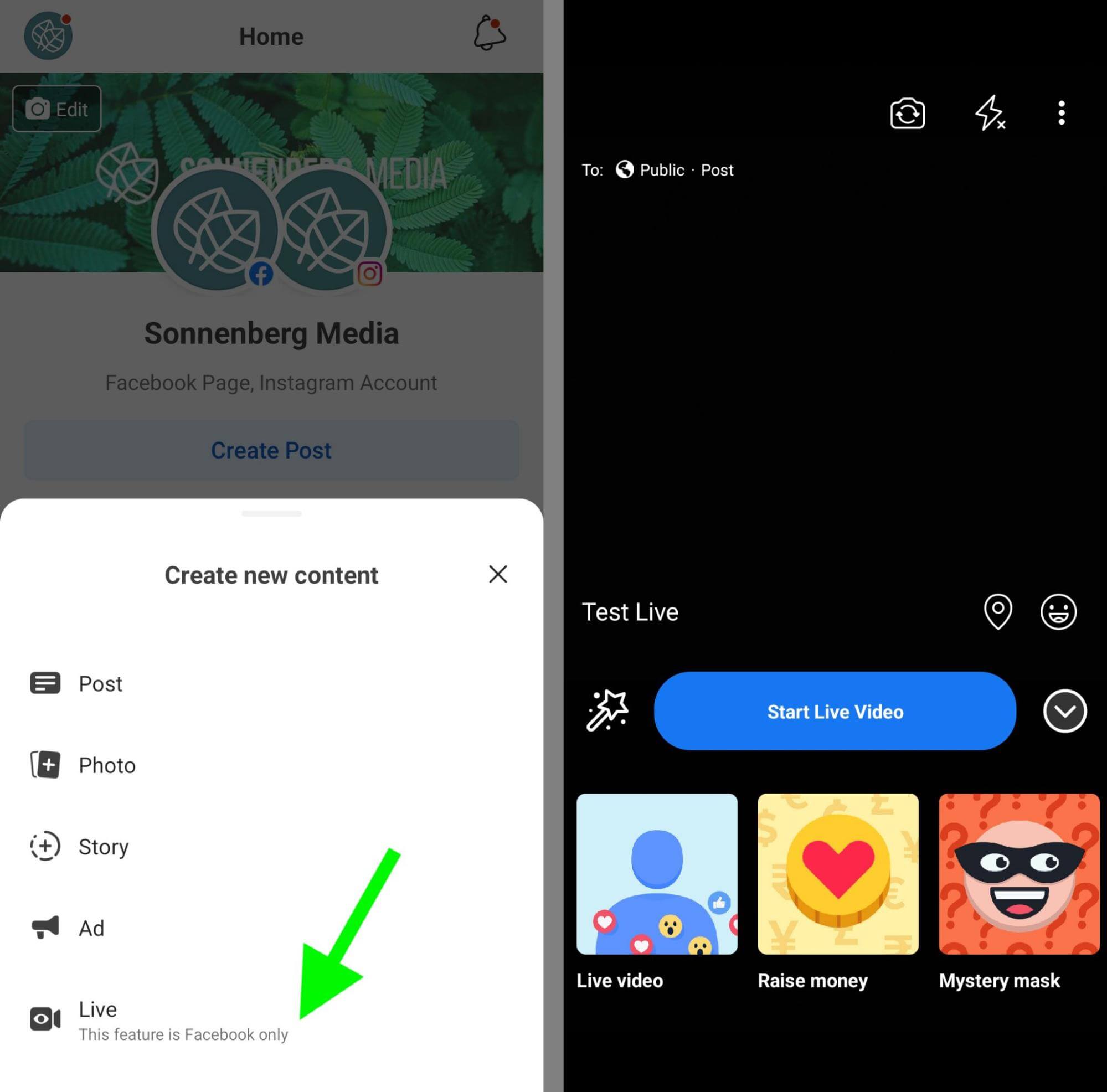 Here are a few ways to use Facebook’s native video tools:
Here are a few ways to use Facebook’s native video tools:
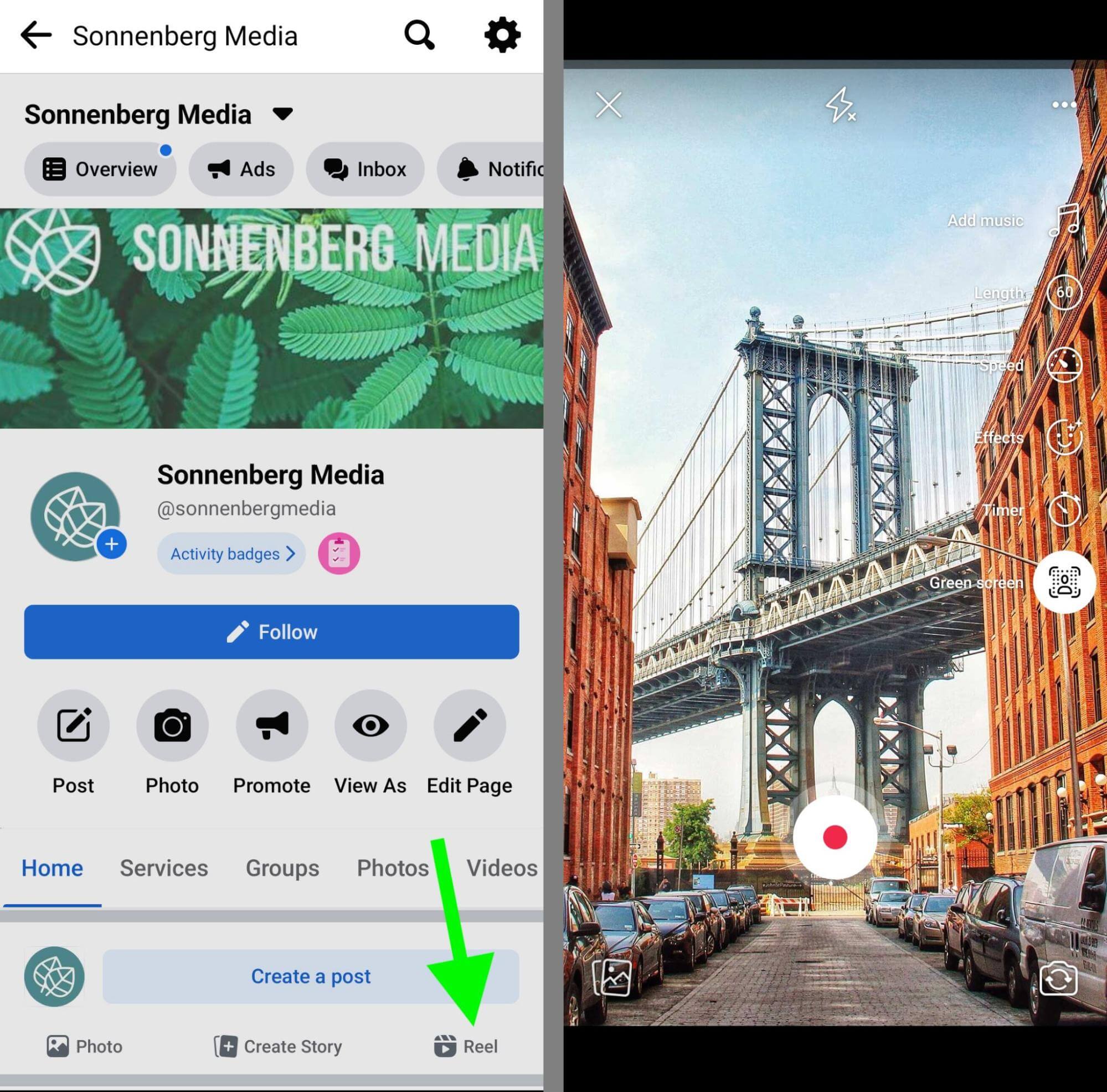
In many cases, the photo and video content created by your team can give your Facebook a much-needed boost. But if your branded content isn't having as much of an effect as you'd hoped, consider adding user-generated content (UGC) to the mix.
Since UGC comes from customers and fans rather than your team, it tends to have a more authentic appeal than branded content. This can translate to more reactions, comments, and shares, as well as increased reach for your page.
To find and share UGC, check your business mentions on Facebook or your brand hashtags on Instagram. Connect with the original creator for permission to repost their work and credit it in the caption when you share.
To maximize engagement, use the above tips for writing compelling captions. Asking questions and making bold statements can help your posts get even more reviews from customers, which can maximize organic reach.
For example, the Facebook post from W&P below features a UGC that represents one of the design studio's products. The caption poses a question to elicit answers, and the post includes a tagged product that customers can purchase from the brand's Facebook store.
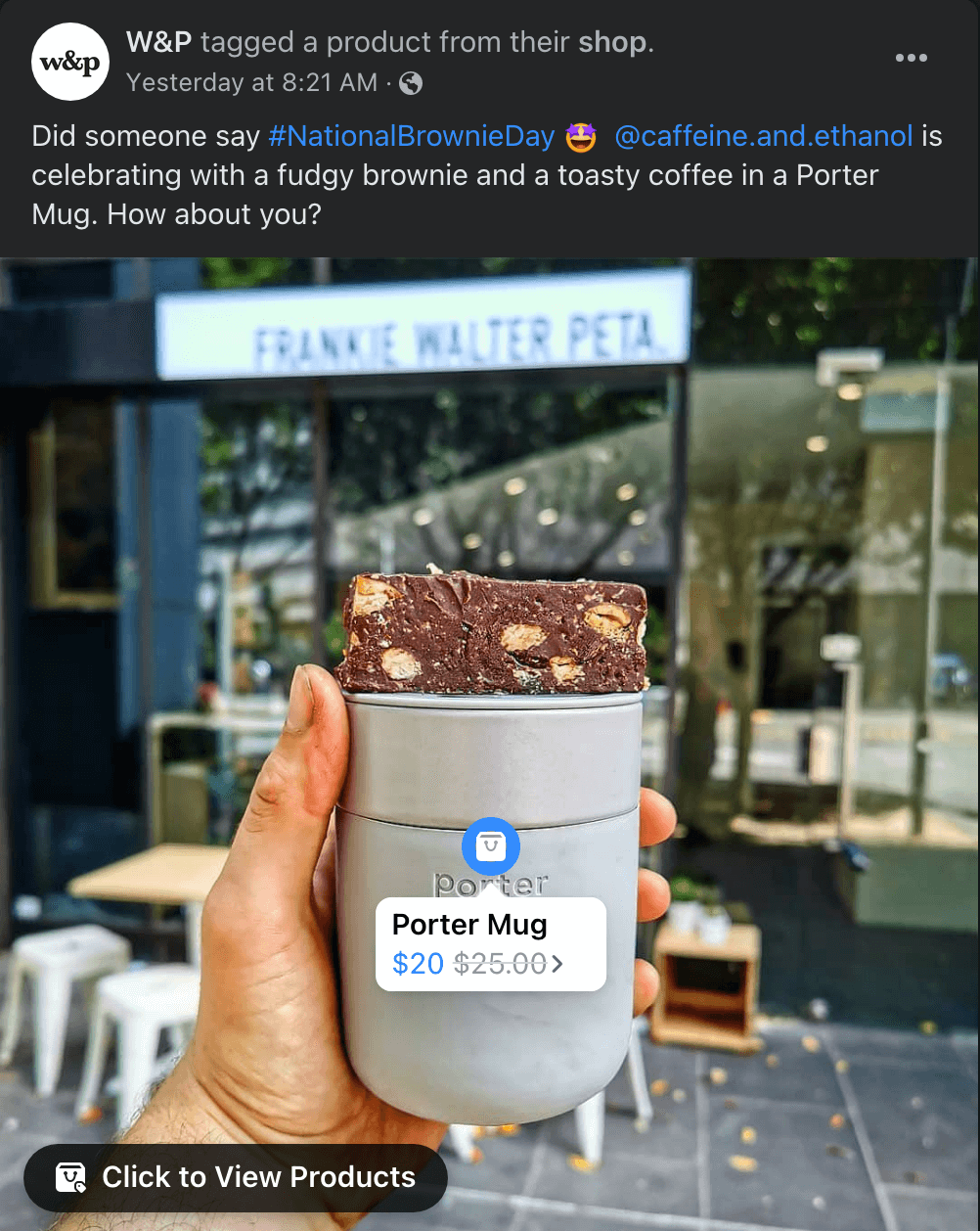
If your Facebook Page's follower count is relatively low, you may struggle to expand organic reach quickly, especially if you're trying to go it alone. When you want to accelerate the growth of your page, creating partnerships can help you reach a much larger audience.
For example, influencer partnerships allow you to introduce your brand to more people, thanks to the endorsement of an influencer in your niche. Because influencer partnerships often span months or years, they can increase your reach in the long run.
Brand partnerships allow you to work with complementary businesses to promote your products together and grow your brands simultaneously. By running co-branded giveaways or contests, you can generate substantial engagement while reaching exponential numbers of people.
For example, the King Arthur Baking Company Facebook post below features a co-branded giveaway with a dairy company and kitchen appliance maker. The post introduces subscribers to the complementary brands while encouraging them to enter the contest, which includes products from all three.
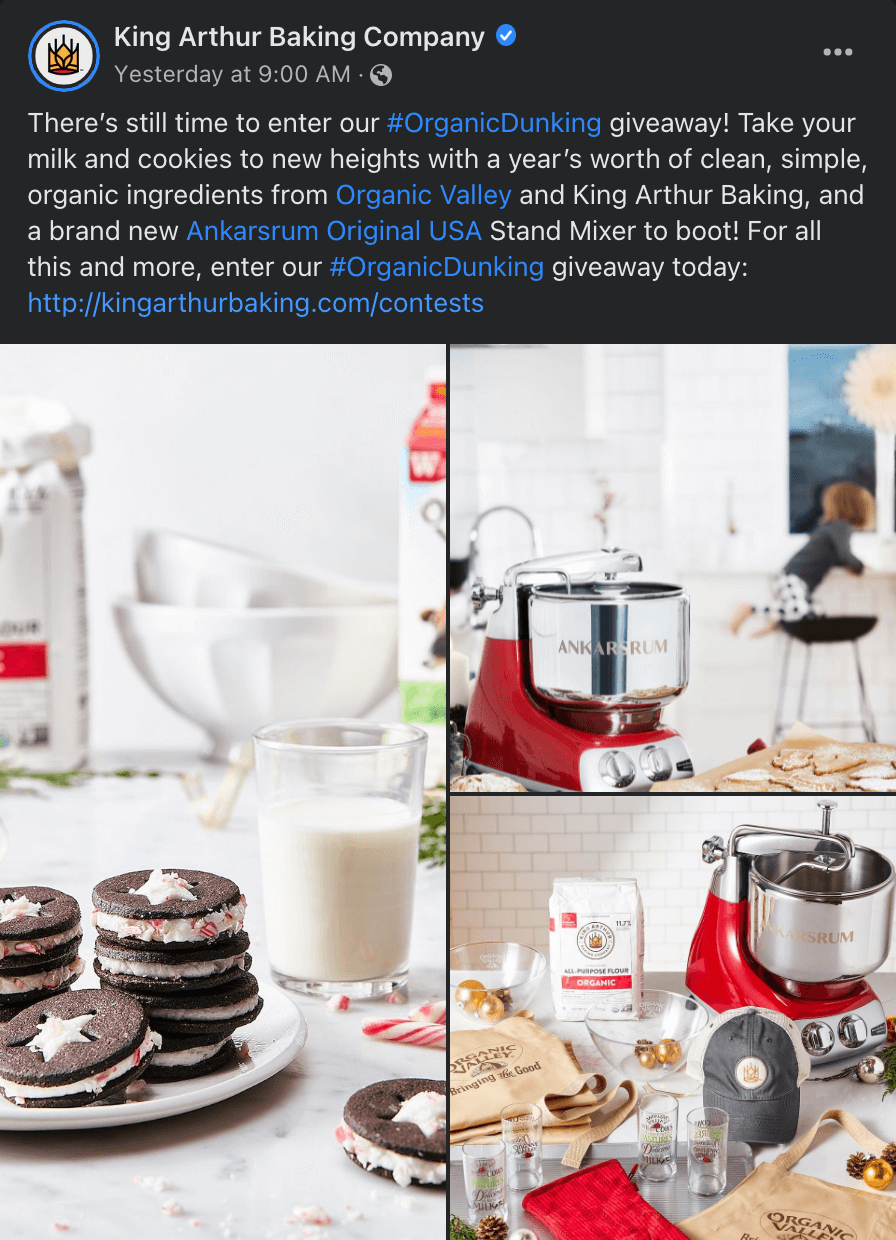
With an advertising budget, you can reach a much bigger customer base on Facebook including people who don’t follow your page. Use the tactics below to maximize your reach with Facebook ads.
To get the best possible results from your Facebook ad campaign, you might want to remarket to existing customers or show ads to people who match your buyer persona. While these settings can define your ideal audience, they can also leave you with a user base that's too small for effective outreach.
Adding a lookalike audience to your ad set can help you reach more people and improve delivery, which can lower your cost per result. To create the most effective lookalike, use a data source that's as close to your ideal audience as possible. For example, you can upload a list of your most important customers or create a lookalike based on value.
Then start by creating a 1% lookalike that most closely resembles your data source. If you get good results, you can always create a new ad set and experiment with a 2% or 3% lookalike audience to further expand your reach.
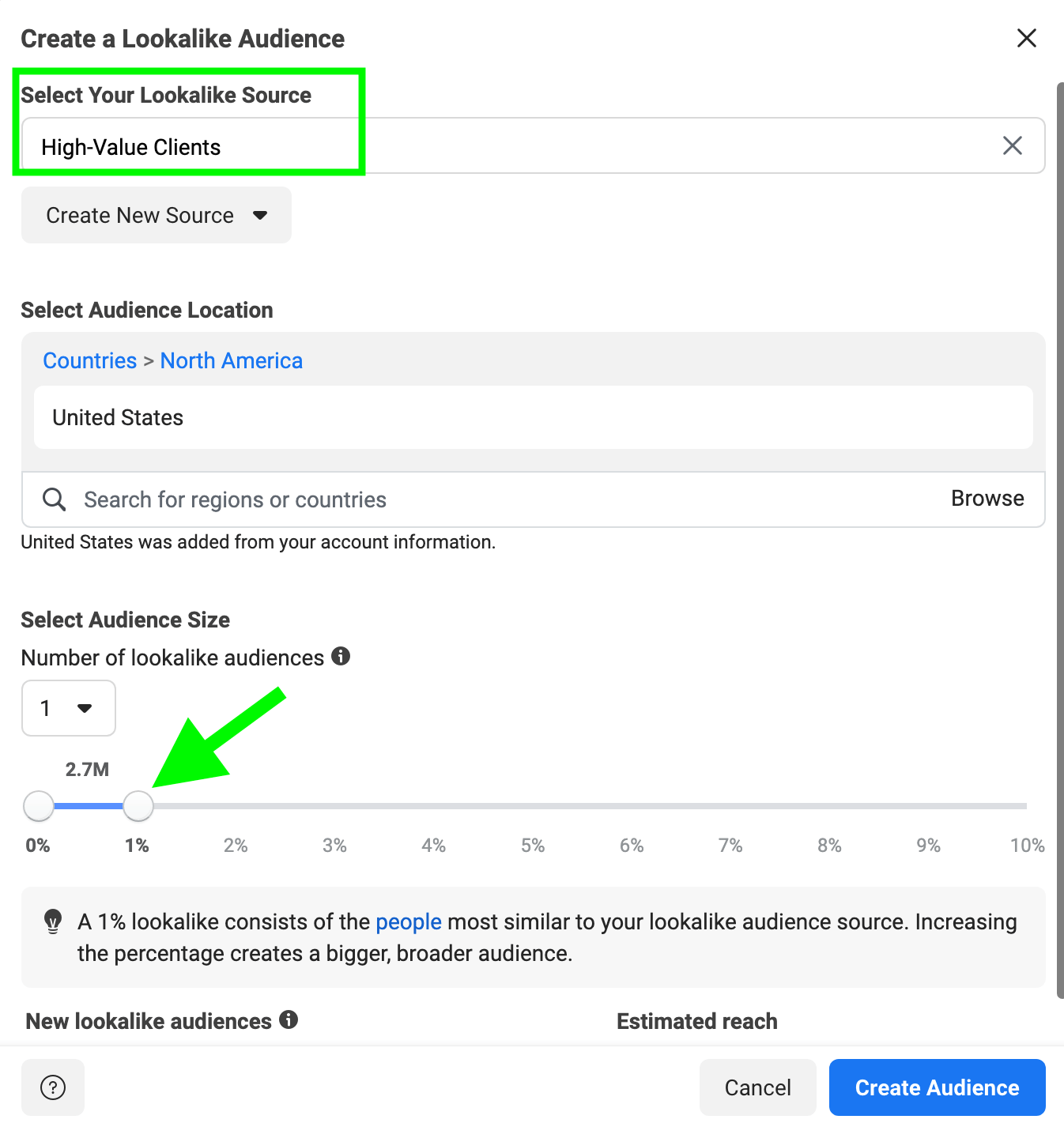
As you build ad sets, it becomes more likely that you'll be advertising to overlapping audiences. This can compromise the reach of your campaigns and force your ad sets to compete.
When active audiences overlap, you may receive a notification in Ads Manager with instructions to resolve the issue manually. But there's no reason to wait or waste resources on ineffective ad delivery.
Instead, you can create an automated rule. In Ads Manager, click the Rules button on the main dashboard. Choose Reduce auction overlap and decide what action you want Ads Manager to take. For example, you can opt-out of underperforming ad sets or opt-out of certain ad sets and reallocate the budget.
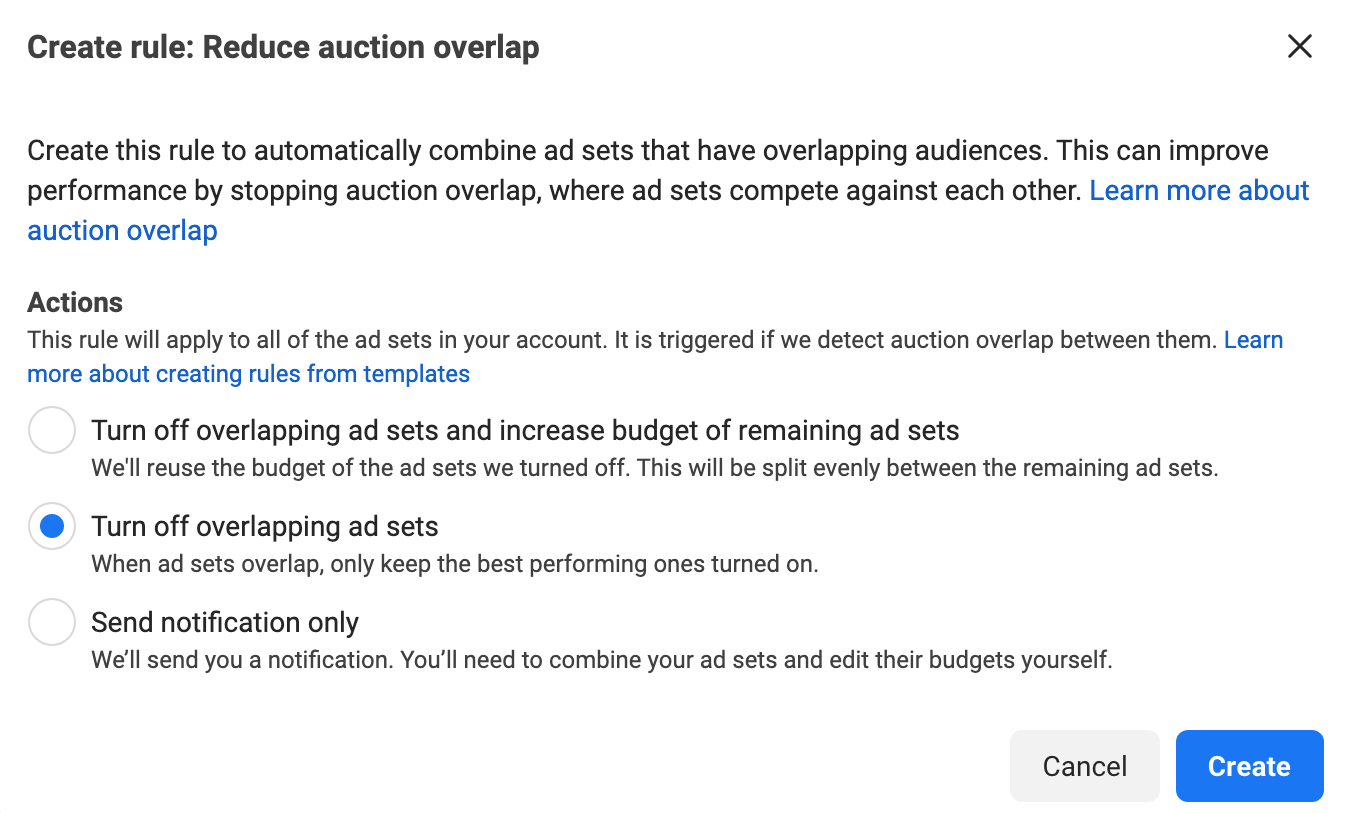
If you're running a campaign targeting the awareness stage of the sales funnel, priority events aren't reflected in your ads. But if you want prospects to take actions in your app or on your website, you need to set up conversion events.
When you want to reach iOS users, Facebook's aggregate event measurement is essential. Without it, Facebook can only serve your ads to Android users and iOS users who have opted into third-party app tracking. In other words, not using priority events can significantly compromise your reach.
To access aggregate event measurement, use Facebook Events Manager to configure key events for your domain. Be sure to prioritize events in the order that matches your advertising goals. For example, purchases are likely more important to track than adds to cart, and both are likely higher priorities than web content views.
Once you've set up conversion events, you can use them to optimize ad delivery for multiple campaign objectives. This means you can reach more people who are likely to take the action you want, which can improve your campaign results.
To optimize for a conversion event, create a campaign with a compatible objective such as conversions. At the ad set level, choose a conversion event from the drop-down menu. Although you can choose non-priority events, keep in mind that the scope is likely to be limited.
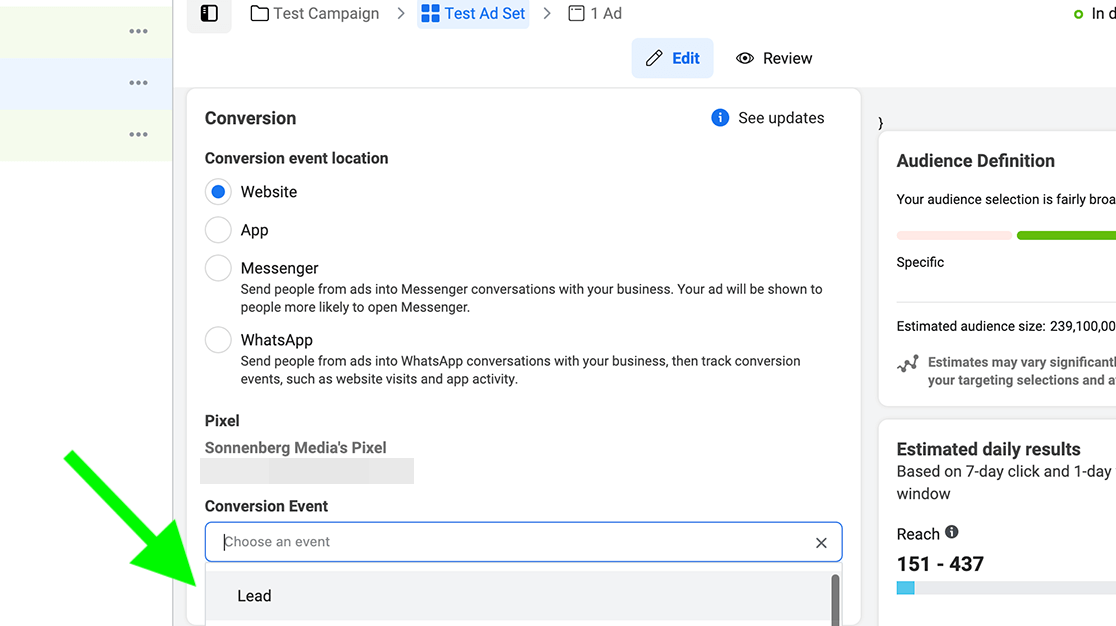
Even if your ultimate goal is sales or leads, you may be able to maximize reach by selecting a lower priority event, such as cart adds or content views. Consider testing two different optimization options to see which provides the best balance between reach and conversions. You can compare them manually or set up an A/B test to automate the process.
You don't need to monitor your campaigns around the clock to maximize reach. Instead, you can set up automated rules to adjust campaigns or alert you to performance issues.
In Ads Manager, click the Rules button and create a custom rule. Use the Conditions dropdown menu to select Reach as the key metric. Then choose the threshold. For example, you can adjust your campaign when it stops reaching at least 10,000 people per day.
If necessary, you can add other conditions to the rule. For example, you might want to know when your campaign isn't reaching at least 10,000 people per day and when the cost per result is over $10.
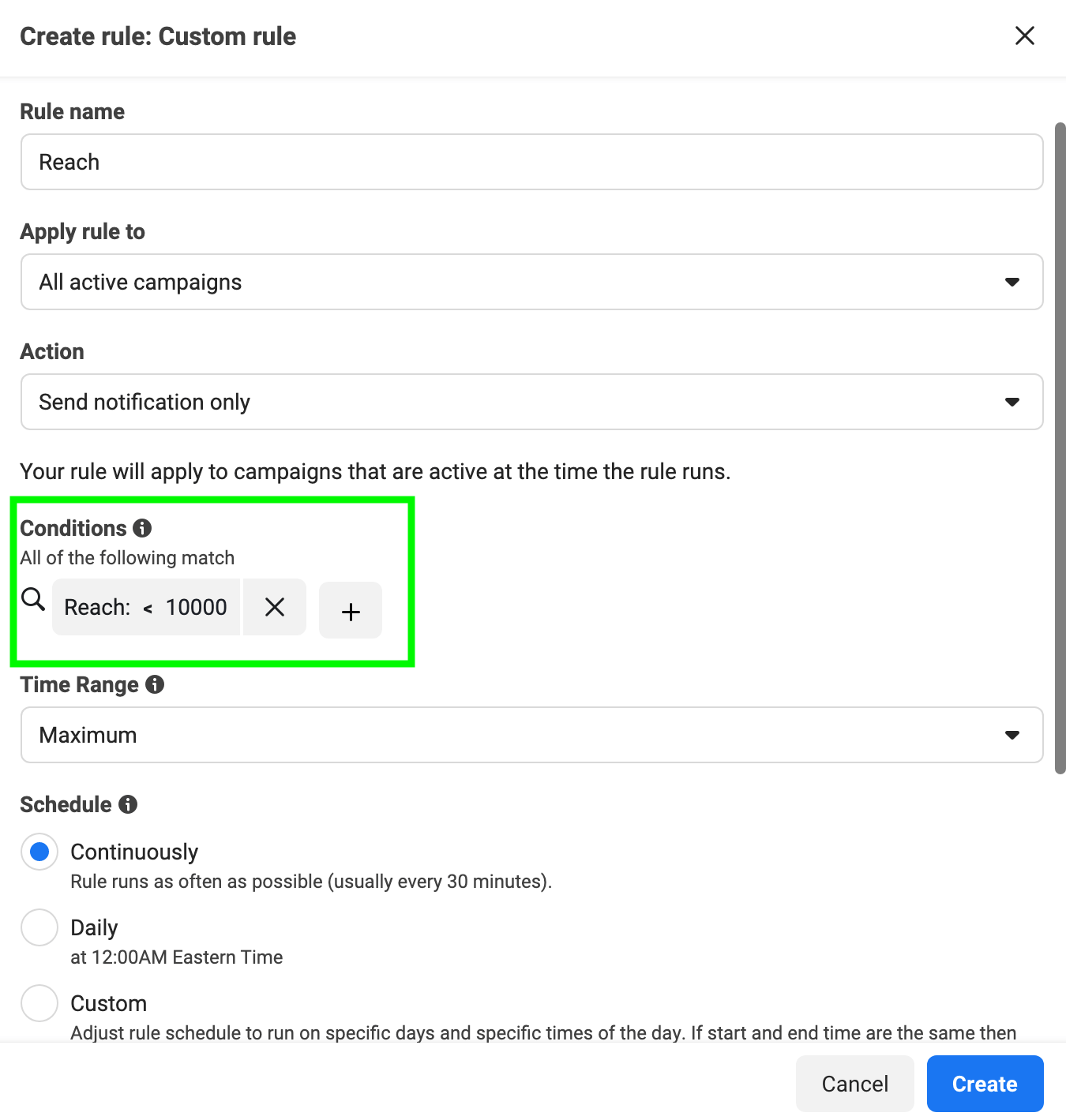
Then choose whether you want the campaign or ad set to stop once it reaches these thresholds. You can also set the budget to increase automatically, which can help you reach your daily audience goals.
You can also use frequency as a key metric. After all, if Facebook shows your ads too frequently to the same audience, chances are they're ad-weary and you're failing to reach a larger customer base. To define a frequency rule, choose a threshold and a time range.
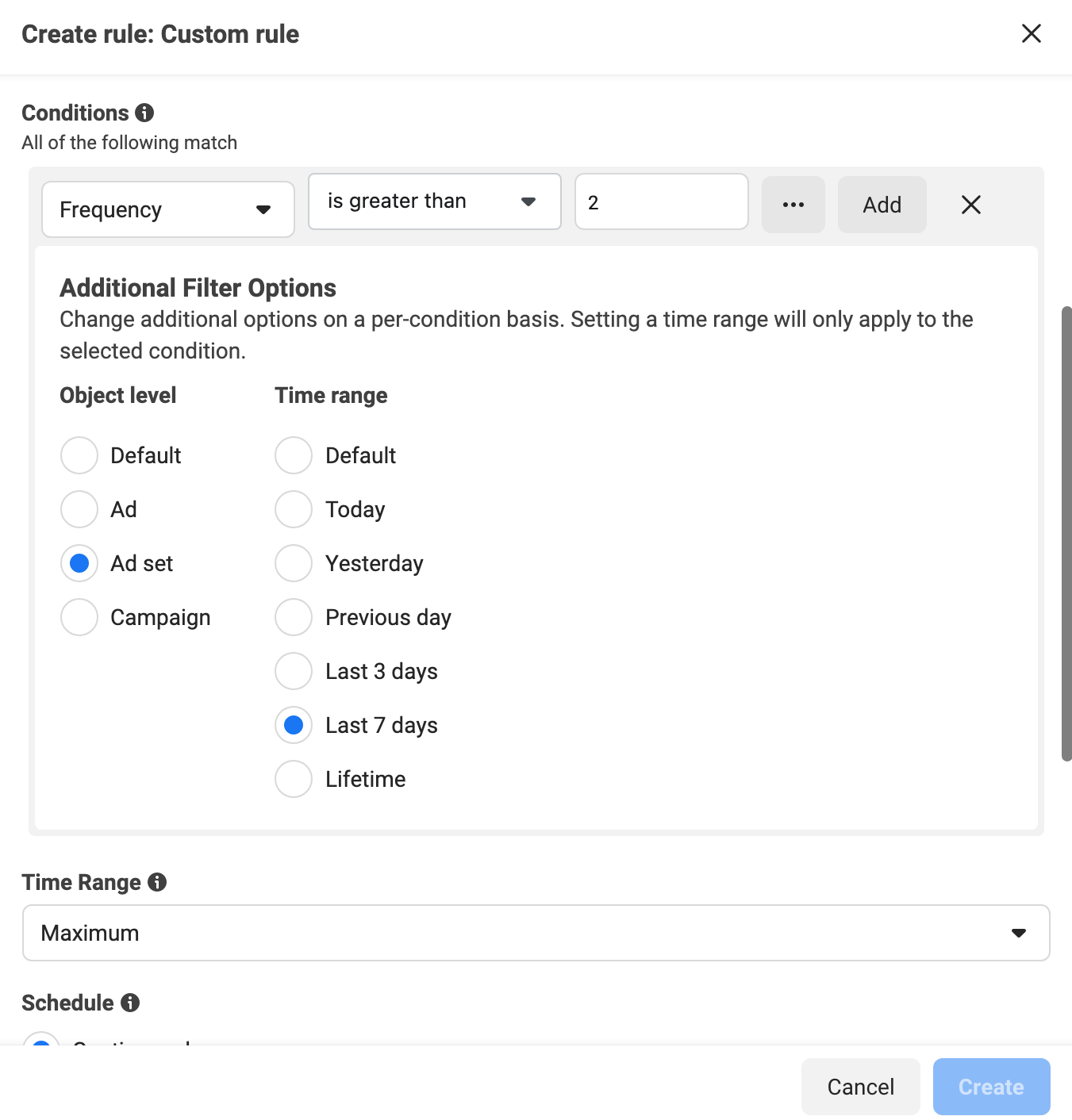
When setting a frequency rule, it’s often a good idea to receive a notification rather than shutting off the ad set or campaign. If you learn that your ads are delivering too often, you can create new iterations to reduce ad fatigue.
There are many organic and paid tactics to try, whether you need to increase Facebook reach quickly or in stages. By incorporating these recommendations into your Facebook marketing strategy and using built-in analytics to measure your results, you can reach more customers and succeed in your business.
Share This News